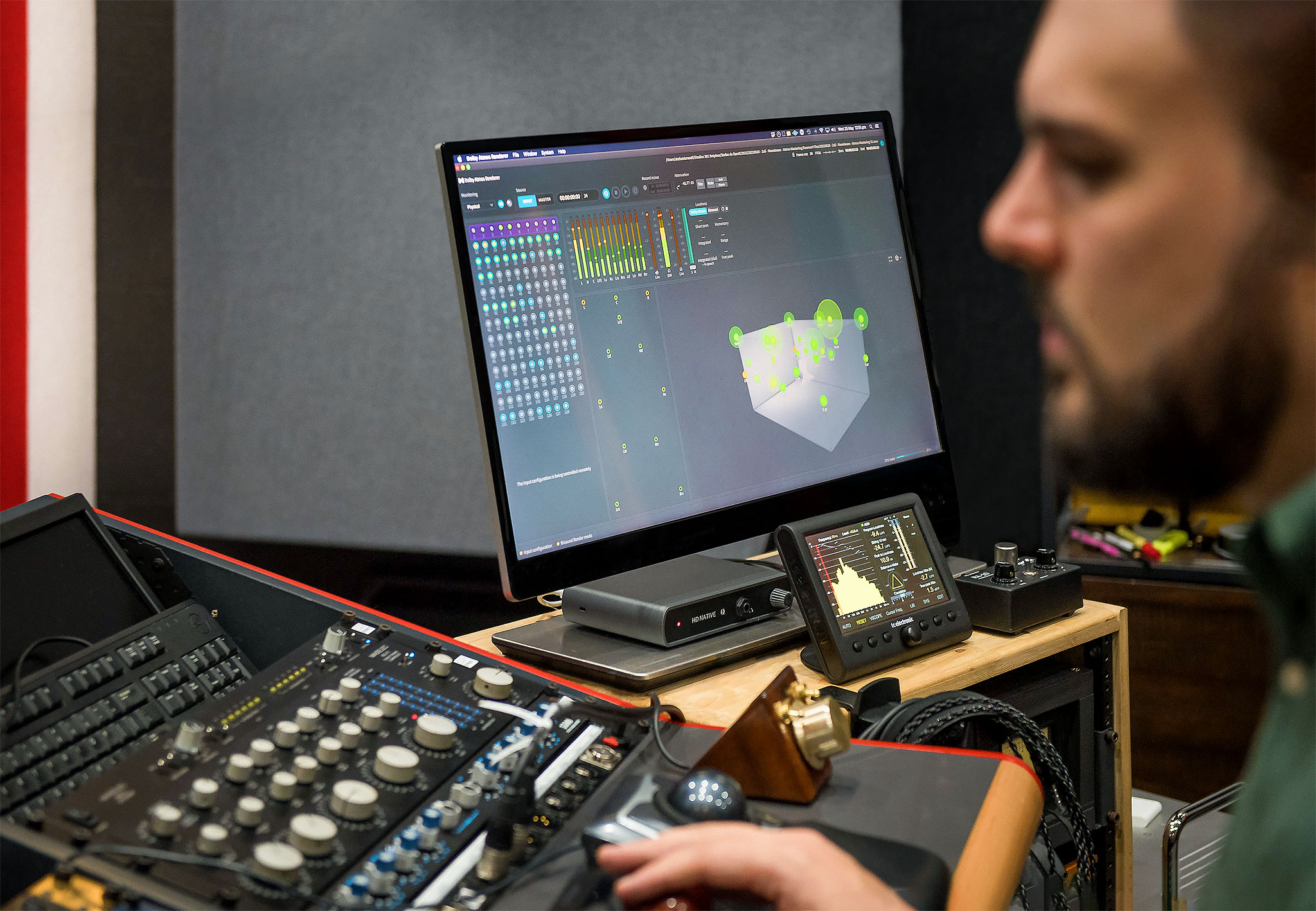Dolby Atmos Music is the latest in surround sound technology from Dolby Laboratories. With Dolby Atmos (also referred to as “Spatial Audio” on Apple Music) you can experience an immersive auditory environment while watching a film or TV show, playing a video game or listening to your favourite music.
While originally developed for film – launching in LA’s Dolby Theatre for the 2012 premiere of Disney animation Brave – Dolby Atmos is now gaining a lot of attention in the music world with the release of Apple’s Spatial Audio, allowing Apple Music listeners to experience immersive audio right from their headphones and compatible Apple devices.
So how does Dolby Atmos Music differ from the surround sound systems that we are used to? There are two key elements that define Dolby Atmos Music:
- Height channels. In a typical surround sound setup, you have a circle of either 5 or 7 channels in front, to the sides, and behind you. Dolby Atmos adds channels from the ceiling as well, meaning sound can appear from above and all around you, creating a virtual 3D space.
- Object-based audio. With typical surround sound we use channel-based audio, where audio is mixed for a specific speaker setup (e.g. a 7-channel surround sound). Dolby Atmos instead uses coordinates in a virtual space to map out different discretely placed sounds, meaning the mix can be played back on almost any type of setup, from headphones to a cinema!
What is the difference between “channels” and “speakers”?
To better understand Dolby Atmos, we first need to understand the difference between channels and speakers.
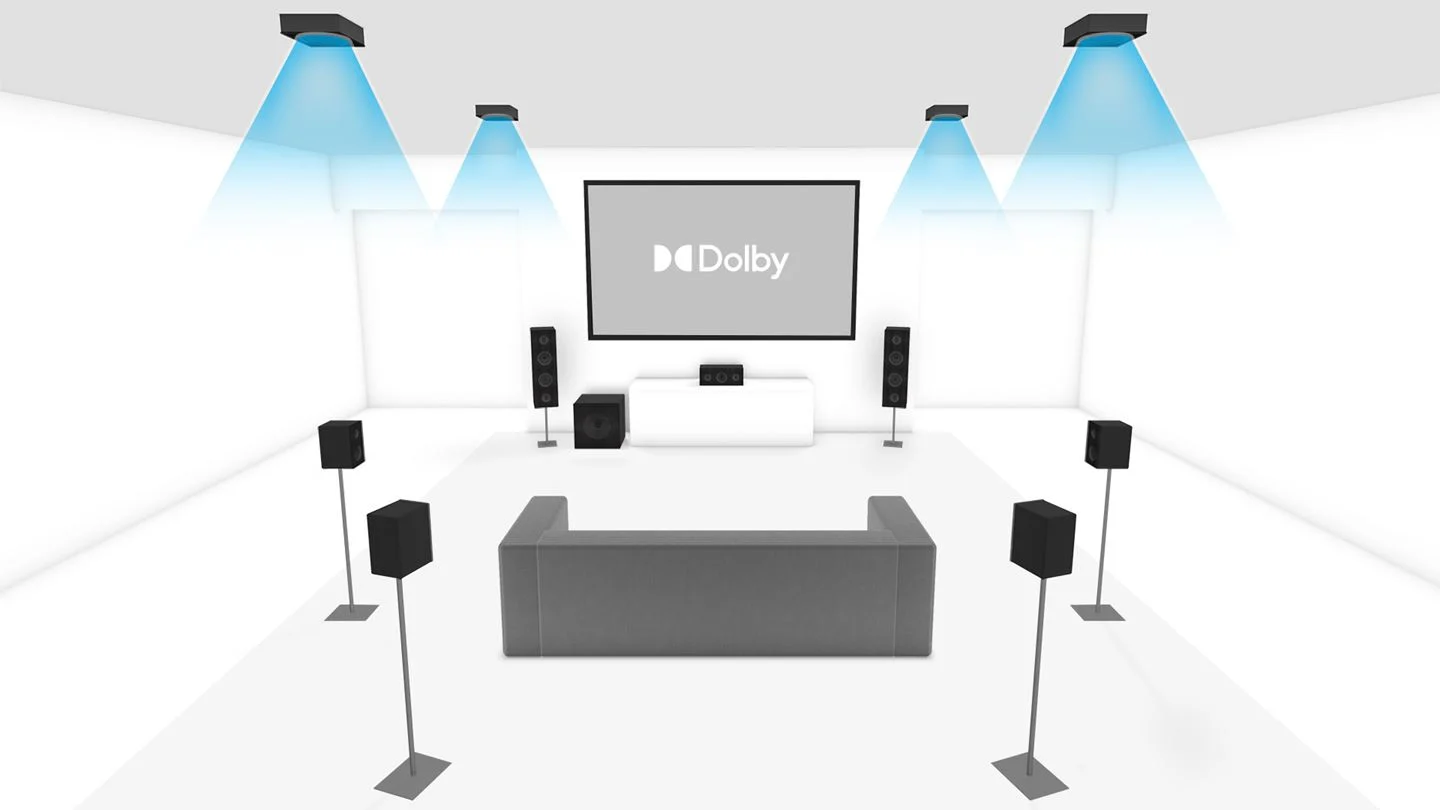
In a small setup such as a home cinema, you might only have one speaker per channel – three at the front (left, right, centre), two to the sides (left mid surround and right mid surround) and two behind (left surround and right surround). Scale this up to a commercial cinema filled with hundreds of people and you’ll probably need more than one speaker per channel, especially along the sides. You might have 6 speakers spread along the left wall, so if a sound is sent to the left, it will play out at equal volume from all 6 of these speakers.
A Dolby Atmos system adds finer detail to this. It figures out how many speakers there are, and can then control each of them independently to move a sound around the space in an incredibly realistic way. The benefit of object-based audio is whether you have 5, 7 or 128 speakers around the listener, the format is completely scalable, meaning the instrument or effect you have moving around the virtual 3D space will be replicated perfectly across all Dolby Atmos setups.
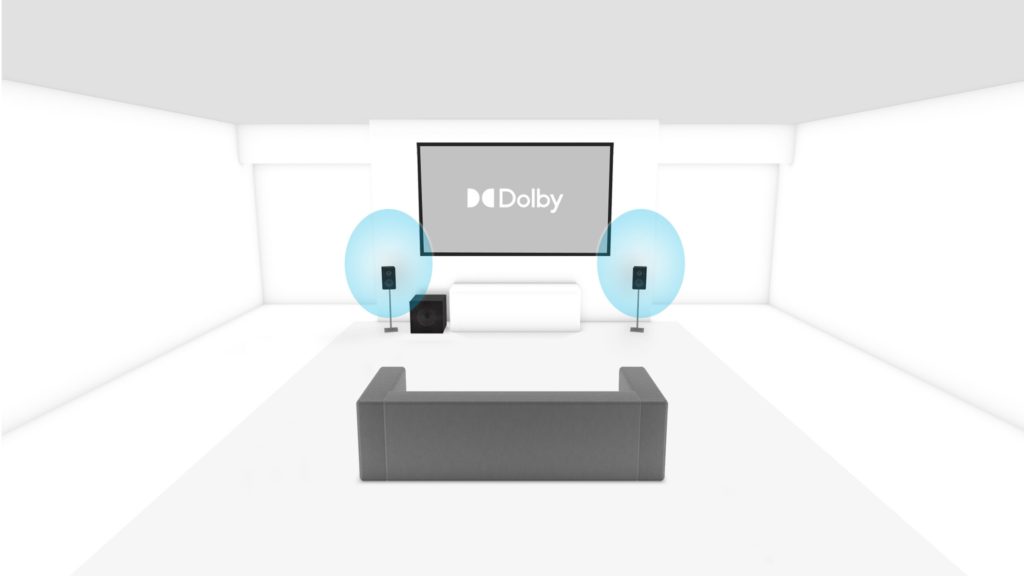
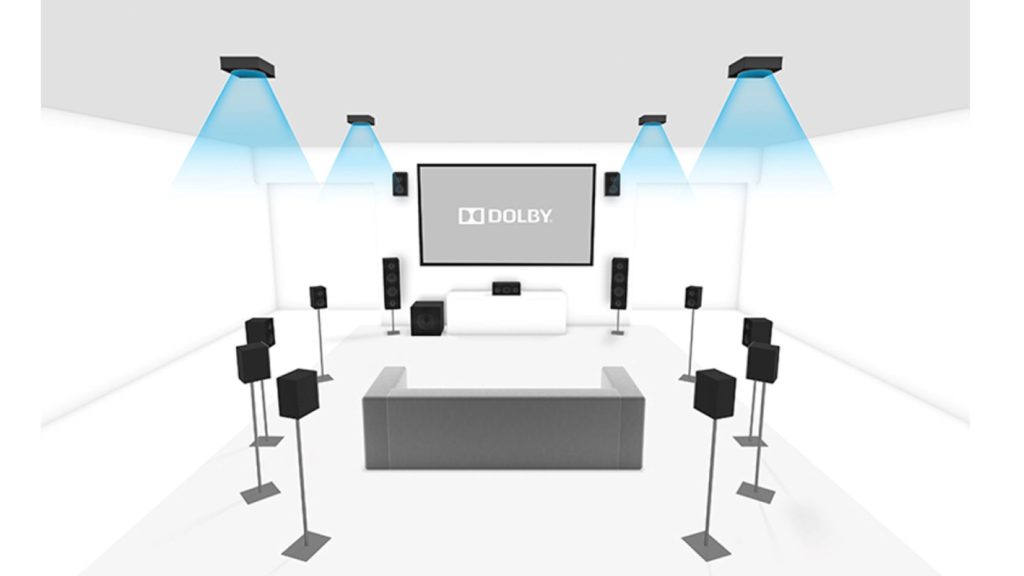
History of Dolby Atmos
Debuting in 2012 with Disney Pixar’s “Brave” as the first film with spatial audio means that Dolby Atmos has been around for a decade now! This is the latest audio innovation from Dolby Laboratories, with American engineer Ray Dolby introducing surround sound to cinemas shortly after he founded the company.
Surround sound began with the 5.1 setup – 5 surrounding channels plus a subwoofer (also called an LFE or Low Frequency Effects). This was followed by the 7.1 setup, adding two more channels behind the listener. Then Dolby Atmos arrived, adding 2 to 4 height channels on the ceiling, creating the possibility of 5.1.2, 5.1.4, 7.1.2 and 7.1.4 speaker setups.
Both surround sound and Dolby Atmos have largely been saved for the cinema or your recording studio. If you’re lucky enough to have a home cinema, you may have enjoyed these experiences without having to travel. Now, Dolby Atmos is more accessible than ever, with a number of streaming services and playback devices replicating the immersive experience of a studio or cinema wherever you are.
Can I Listen to Dolby Atmos in my Headphones?
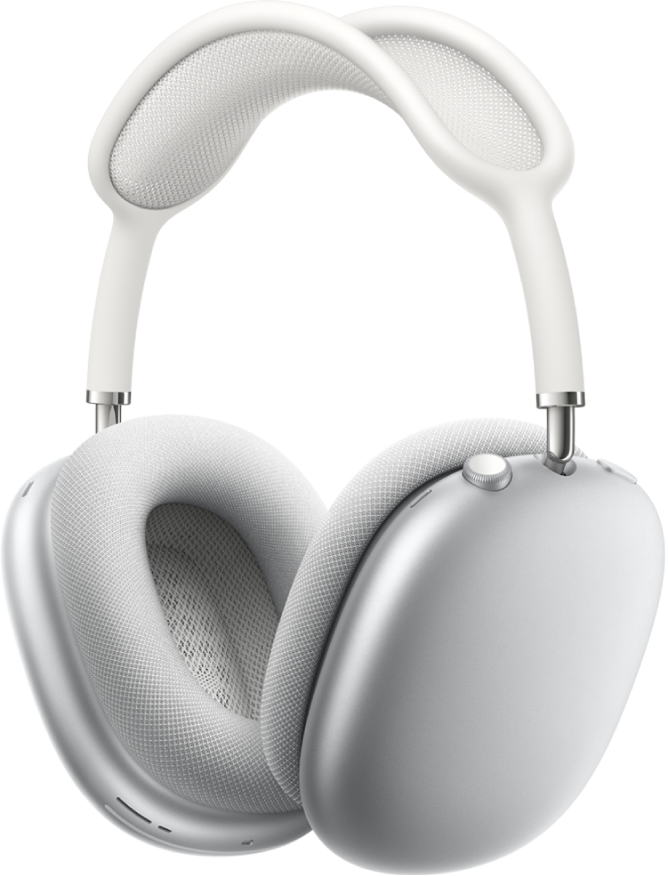
The short answer is yes! Even with just two headphone speakers, you can experience immersive audio. So why are there Dolby Atmos-enabled headphones if any pair of headphones can play Dolby Atmos?
While most of the processing is done on your playback device and any pair of headphones will work for the binaural version of the mix, Spatial Audio headphones often come with multiple drivers and may also include additional sensors that enable dynamic head-tracking. This allows you to look around the 3D space as you move your head. For example, if a keyboard is set to be on the right of the listener, by turning your head to the right you will be able to hear that keyboard in front of you (as if you were looking at it) and everything that was previously in front of you is now coming from your left.
Why Mix in Dolby Atmos Music?
The ability to listen to Dolby Atmos Music mixes on virtually any device is an exciting step forward for musicians and producers. Spatial audio is now no longer limited to those with complex speaker setups or cinema technology – it can be accessed by the everyday music fan.
TIDAL and Amazon Music both added support for Dolby Atmos Music in 2019. This was followed by Apple Music, who announced their ‘Spatial Audio with support for Dolby Atmos’ in June 2021.
The main benefit of producing and mixing in Dolby Atmos Music is the new level of freedom. You’ll have the opportunity to use a new dimension of creativity when it comes to sound placement. Studios 301 Dolby Atmos engineer Stefan Du Randt explains,
“It really is the future of music. The format can make your mixes feel cinematic and immersive, almost like you’re watching the story of the song unfold.”
Stefan Du Randt
Another benefit is the ability to create more separation between sounds by adding physical space between them. A busy mix can be organised with instruments above, behind and beside you so they can all be heard clearly. This also gives you the opportunity to create even larger mixes, packing a huge range of sounds into one mix without losing sight of any of them. The format also allows you to have more control over mapping effects. If you want a sweeping sound to travel from behind the listener into the central speaker in front of them, you can do that with Dolby Atmos Music.
How can I release my music in Spatial Audio?
If you’re ready to make your music as immersive and exciting as possible, then you’re ready for Dolby Atmos Music!
Before you book a session, make sure you have the following:
- Final, signed off stereo master file
(remember that stereo and Dolby Atmos Music are two separate formats. In order to fulfil a Dolby Atmos mix, we require the finished stereo master. This also ensures that the Dolby Atmos mix will match the vibe and loudness of the stereo version. If you don’t have a stereo mix yet, you can book in a “Full Mix” which includes Stereo and Dolby Atmos) - Mix Stems at 48kHz 24bit
Head over to the Dolby Atmos Music page and fill out the form at the bottom to book or ask any question you may have.
